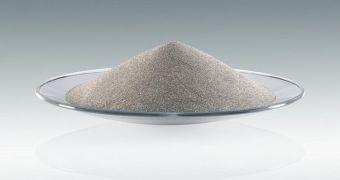There are some metal 3D printers already in use, but most of them can only build things out of steel, titanium and a few other metals. Most alloys are still beyond the capabilities of such machines, however, and this is what Zecotek wants to change.
Zecotek is a Canadian company headed by President, Chairman, and CEO Dr. A.F. Zerrouk. Its focus is on 3D printing technologies that can create objects from metallic powders.
Selective laser sintering has been applied well enough to steel, titanium and a few other metals, but the majority of the so-called high-performance alloys are still impossible to shape in this manner.
That is why Zecotek has partnered with the Greek-Armenian company LT-PYRKAL for the development of a 3D printer that can use those alloys.
No actual list of alloys was provided, so we can only hope that future updates on this project will specify at least the ones likely to be used first.
Anyway, Zecotek and LT-PYRKAL will start out by creating a more compact metal 3D printer that is, nonetheless, still large enough and sufficiently precise to be used in product prototyping.
LT-PYRKAL’s contribution will be in the area of electro-mechanical components that the Zecotek 3D printing technology cannot work without. The two companies have had six months now to iron out the details (their partnership began in February).
In truth, there are other printers that can work with metal alloys, but none of them is particularly fast, and the objects they can create aren't that big either. It would have helped if Zekotec provided some photos of the printer at the very least, or some sample objects, but they did no such thing.
Their project is in its very early stages, and the corporations are more concerned with protecting their intellectual property than with media hype at this point. It makes sense, in a way, because their intended customers (from the aerospace and construction or automotive industries) will pay more heed to private demonstrations than media hype anyway.
We will keep an eye out for some pictures, maybe a video or two of the prototyping process. Or perhaps a patent application filed with the USPTO, or whatever equivalent bodies exist in Canada and Greece.
In addition to aerospace, construction automotive industries, the new 3D printer with metal alloy support should do great things in medicine and health care as well. Prosthetics and (partly) bionic limb replacements will benefit from its creation, if nothing else.

 14 DAY TRIAL //
14 DAY TRIAL //